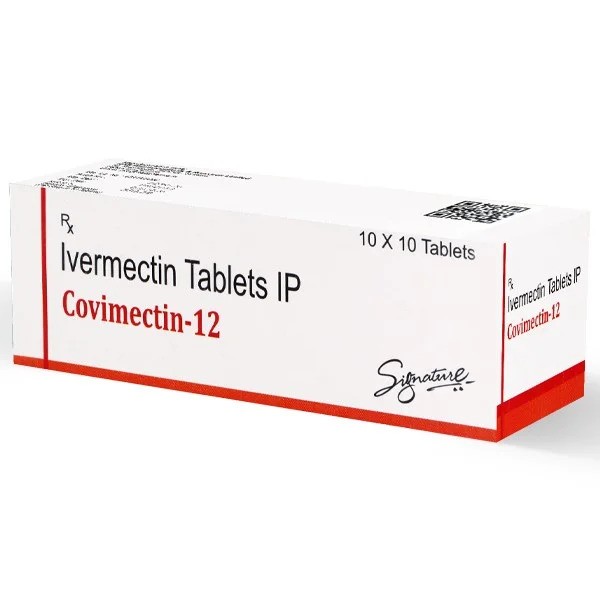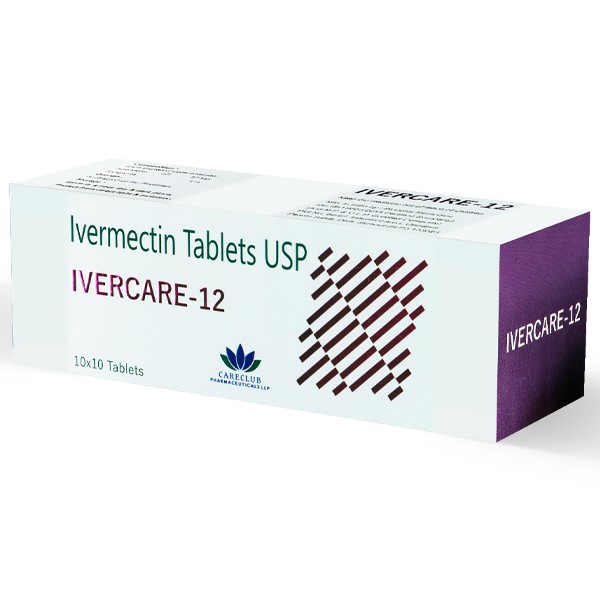Covimectin is an ivermectin-based medication used to treat various parasitic infections, similar to other ivermectin products. Often prescribed for both humans and animals, Covimectin works by disrupting the nervous system of parasites, effectively immobilizing and killing them. This medication has been widely utilized for managing conditions like strongyloidiasis, onchocerciasis (river blindness), and scabies, among others.
We’ll explore what Covimectin is, its mechanism of action, its applications, and safety considerations for its use. Whether you’re considering this treatment for yourself, your pet, or livestock, understanding how Covimectin works can help you make informed decisions about its use. Let’s take a closer look at this widely-used antiparasitic agent and its role in combating parasitic diseases.
History of Ivermectin and its use in treating parasitic infections
Ivercare and Covimectin, as well as other medicines, contain Ivermectin, whose history is as intriguing as scientific development itself along with global health growth. Ivermectin was discovered in the 1970s by a Japanese microbiologist, Dr. Satoshi Omura, and an American scientist, Dr. William C. Campbell, who took it from Streptomyces avermitilis (a soil bacterium). Ivermectin originated from a more profound undertaking of inorganic chemistry aiming at finding treatments to parasitic infections that were emerging epidemics in both humans and animals.
Ivermectin’s astonishing discovery stemmed from its ability to immobilize parasitic worms and insects, which also makes it useful for treating onchocerciasis, strongyloidiasis, and scabies. In 2015, Drs. Omura and Campbell received the Nobel Pize in Physiology or Medicine for their extensive research in the aforementioned medical fields, which stands as admiration towards Ivermectin’s impact on world health.
In the 1980’s, they approved the use of ivermectin in the veterinary field, where it became widely useful in the treatment of parasitic infections in livestock, pets, and other animals. Ivermectin’s extensive antibacterial spectrum made it useful both in the countryside and in farming communities, considerably enhancing animal health and productivity.
Equally astonishing were the transformations resulting from the drug’s human uses. From the end of the 1980s, ivermectin began being used for onchocerciasis disease associated with the Onchocerca volvulus parasite. The WHO started deploying its programs for the wide distribution of Ivermectin, which significantly decreased the incidence of river blindness, especially sub-Saharan Africa. Due to this success, Ivermectin started to be termed as a wonder drug in the war against neglected tropical diseases (NTDs).
Further research found Ivermectin to be useful for a wide range of parasitic infections, including filariasis, lice, heartworm in pets, and more. The wide availability of the drug, its efficacy, low cost, and strong safety profile have cemented ivermectin’s status as one of the foremost treatment options for parasitic infections internationally.
The places Ivermectin has impacted public health, especially in developing areas, solidify its categorization as one of the most important and revolutionary drugs in contemporary medicine. It is still instrumental in the treatment of human and veterinary parasitic infections and strengthens the global defense against parasitic infections.
How does Covimectin work?
Just like other medications based on ivermectin, Covimectin works by focusing on the nervous system of the parasites and disturbing their functioning. Its effectiveness is derived from its binding to particular receptors within the parasites’ nervous system – the glutamate-gated chloride channels. These channels play an important role in the communication between nerve cells and muscles movement related to various types of parasites.
1. Binding to Nerve Receptors: Covimectin attaches to glutamate gated and chloride channels on the nerve and muscle cells of the parasite. These structures are located in the nerve cells of invertebrates (like worms, lice and mites) but are less pronounced or absent altogether in humans and most mammals. This ensures that the medication only works on the parasite without harming the host Organism.
2. Disruption of Nerve Function: Binding of Covimectin to these receptors causes too much chloride ions to enter the nerve cells. This causes hyperpolarization of the nerve cells which “put down” the ceaseless excitatory neurotransmitters and other substances that allow signals to be passed along. This results in the muscles of the parasite being paralyzed.
3. Paralysis and Death:
The paralysis ic ovimectin causes poses an immobilization stranglehold on the parasite which makes it unable to eat, move, or reproduce. In the absence of normal functionalities, the parasite gradually dies. For example, ** ectoparasites** such as lice or scabies mites on the other hand die whereas endoparasites such as worms are either expelled from the body or die inside the host.
4. Broad Spectrum Activity:
Covimectin successfully works on a larger variety of parasites with nematodes (roundworms), arthropods” (insects like lice and mites), and ectoparasite. The wide-range activity is one reason ivermectin is so widely used with its formulations in human and vet biotech.
Safety and Considerations
Even though Covimectin works splendidly, it is important to be superviced by a healthcare doctor or a vet. As every medication, misuse or wrong dosages corrently follow side adverse effects that in this case are uneased. For instance, in humans ivermectin may dores bearages to vertain ease the risk of light head spinning, embarrass tripping, or meek scars if the parasitic content is plentiful and with some othe health predicaments.
As noted previously, Covimectin causes paralysis and death in the parasite by blocking its nervous system. It’s usefulness with regard to many parasitic diseases has made it a treasured medicine for both humans and animals.
Benefits and uses of Covimectin
Covimectin which is widely used in the veterinary space is an antiparasitic medication that contains Ivermectin. It has some utility in human medicine as well. It is useful in the treatment of various external and internal parasites, which includes gastrointestinal worms, mites, and lice. Covimectin exerts its effect by damaging the nervous system of the parasites, eventually resulting in their death. For instance, Livestock and pets enjoy improved health, increased weight and higher productivity. In some parts of the world, Covimectin is medically prescribed for treating human infectious diseases such as strongyloidiasis and onchocerciasis. Because of its unparalleled effectiveness, ease of use, and low price, Covimectin is favored in clinical public health and animal husbandry parasite control protocols.
Comparison with other treatments for parasites
When used properly, Covimectin is far more effective than other antiparasitic treatments because of its long action and minimal side effects. Other medicines such as albendazole or fenbendazole are effective against some internal parasites, but require more doses over a shorter time period. These also do not treat external parasites such as mites or lice. On the other hand, Covimectin has a single treatment for both internal and external infestations. Furthermore, it is safe to use in a range of animals which makes it popular amongst veterinarians and livestock farmers. In comparison to other medicated solutions which have a narrow spectrum of use, it is far more practical and cost efficient with parasite management.
Side effects and precautions
Even though Covimectin is usually quite safe, it is necessary to highlight and take precautions concerning possible side effects. Some side effects in drooling, lethargy, and diarrhea might be observed in animals albeit on rare occasions. Also, more severe reactions observed include symptoms such as headaches and other neurological symptoms which some dog breeds like collies and certain related herding breeds can show due to a genetic sensitivity to ivermectin.
Occasionally human uses might show dizziness, rash, and sore stomach as side effects. As with all medications, it’s critical to follow veterinary or medical instructions and not use Covimectin on people or animals not specifically prescribed for its use. These medication restrictions apply to pregnant and lactating animals and should only be done under a professionals eye. Risk mitigation is achieved through proper dosing, storage, handling, and prescribing.
Conclusion
Covimectin is one of the most advanced treatments in antiparasitic therapy, providing a refined solution while still taking cues from Ivermectin. It not only interrupts the life cycle of dangerous parasites but also ensures better outcomes for both animal and human health.
The potential of Covimectin in redefining the approach humans have towards parasitic diseases is reinforced by the widespread advantages and diverse applications it offers. The significance of Covimectin’s benefits compared to traditional treatments has been evident in both clinical and veterinary settings due to its broader range of efficacy and ease of administration.
Like most potent medicines, it is critical to understand side effects and follow recommended guidelines for safe and responsible usage. These measures guarantee the maximization of its benefits while minimizing risks.
Further down the line, it is likely that new avenues of research will be uncovered for Covimectin, making it an increasingly reliable solution. Its evolving reputation, paired with its proven effectiveness, is likely to influence global strategies for managing and ultimately eliminating parasitic infections.




Leave a Comment